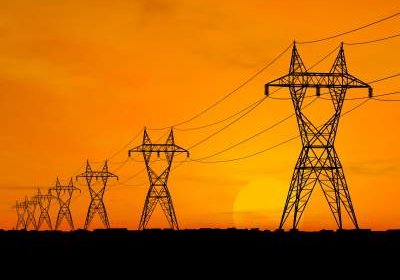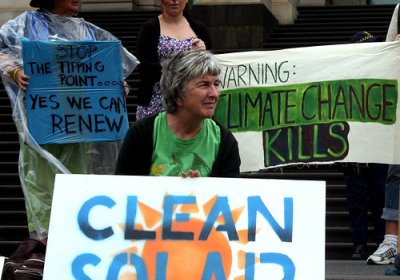More privatisations of public assets are in store for New South Wales as Premier Dominic Perrottet refuses to rule out more sell-offs. Jim McIlroy reports.
electricity
Are small-scale nuclear power reactors the key to dealing with the high cost of electricity in South Australia? Someone in the policy apparatus of Labor Premier Jay Weatherill seems to think so.
Adelaide’s Channel 7 splashed the story across its news reports on September 7: the nuclear power option was being officially explored!
“A top-level report clearly indicates small-scale reactors have been on the short-term radar,” the channel stated.
NSW Premier Mike Baird has pushed ahead with plans to privatise the state's power network, without waiting for the results of the NSW election in March next year.
The Stop the Sell Off campaign has condemned the move, saying it makes a mockery of the premier's claim that he would seek a mandate from voters before pressing on with the sale of 49% of the state-owned electricity network businesses Ausgrid, Endeavour Energy, Transgrid and Essential Energy.
A report commissioned by the Victorian branch of the Electrical Trades Union (ETU) shows that energy sector privatisation in Australia has been "a dismal failure", which has produced "no benefits" for consumers, but has resulted in "large fiscal losses" for taxpayers.
The Electrical Trades Union released this statement on July 1
***
Unions have criticised today’s announcement of the sale of power generator Eraring Energy as a “fire sale” that fails to realise the true value of the asset for NSW taxpayers.
Power industry unions said it was absurd to sell off the profit-making enterprise, which delivered almost $140 million in profits last year alone, for just $50 million.
Australia’s big electricity generators are feeling the squeeze of electricity demand falling in recent years and growing competition from renewable energy.
This year, some environmentalists criticised the federal government for scrapping the “contracts for closure” negotiations, which would have made the federal government compensate operators to close up to 2000 megawatts of coal-fired power stations. However, more than 2000 megawatts of coal power plant has now been closed or “mothballed” across the country without paying the contracts for closure.
Coal seam gas (CSG) advocates are running a fear campaign against a backdrop of soaring electricity prices in New South Wales. They claim that unless CSG development in NSW goes ahead, household gas bills will triple.
This is a frightening idea, given the stress already caused by electricity price hikes.
Over the past four years the average power bill in NSW has gone up by 69% on top of inflation. Users face a further 18% price hike this year.
The NSW government has decided to cut the solar photovoltaic feed-in tariff from 60 cents per kilowatt hour (kW/h) to 20 cents per kW/h.
The October 27 announcement came after the tariff received a strong uptake, particularly in Sydney’s western suburbs and rural NSW. The total capacity once remaining orders are connected will be around 193 megawatts (MW).
The Greens and the Australian Manufacturing Workers Union (AMWU) slammed the decision to axe the tariff.






